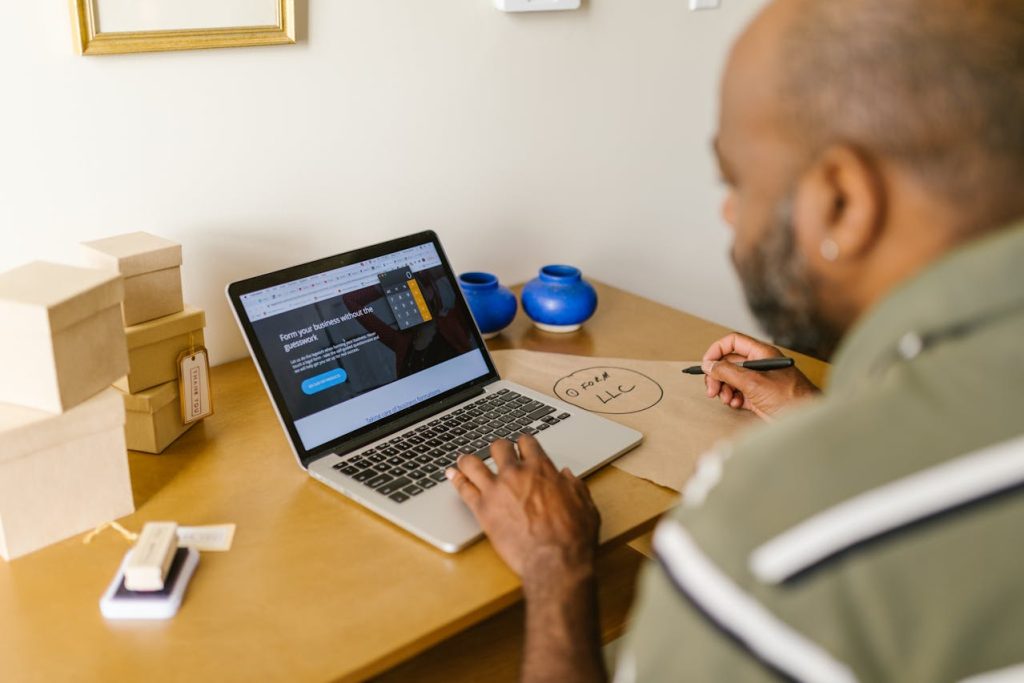In today’s digital-first world, having an effective website is crucial for Irish businesses aiming to establish a strong online presence. Whether you’re a local café in Dublin, a tech startup in Galway, or a tourism business on the Wild Atlantic Way, your website often serves as the first point of contact for potential customers. A well-designed site can build trust, drive engagement, and boost conversions. Here are the key elements every Irish business should incorporate into their website design.
1. Localized and Clear Branding
Your website is an extension of your brand. For Irish businesses, incorporating elements that reflect local identity and culture can help establish a strong connection with visitors.
- Best Practices:
- Use a consistent color scheme and typography that aligns with your brand identity.
- Include elements that highlight your Irish heritage or values, such as showcasing the “green” initiatives your business supports.
- Add an “About Us” section that tells your unique story, which is particularly important for Irish SMEs and family-run businesses.
2. Mobile Responsiveness
With mobile internet usage surpassing desktop in Ireland, a mobile-friendly website is a must. Your website should provide an excellent experience regardless of the device.
- Key Features:
- Responsive design that adjusts to different screen sizes.
- Clickable buttons, easy-to-navigate menus, and fast loading times on mobile devices.
- Test across various devices to ensure consistent functionality.
3. Intuitive Navigation
Irish users expect a website to be simple and user-friendly. Confusing navigation can drive visitors away, leading to lost business opportunities.
- Navigation Tips:
- Use a clear menu structure, limiting the number of clicks needed to find important information.
- Include key links like “Home,” “Products/Services,” “About Us,” “Contact Us,” and “FAQs.”
- Consider adding a search bar for larger websites with extensive content or product catalogs.
4. High-Quality Visuals and Local Content
Ireland is known for its stunning landscapes and rich heritage, which can inspire the visual elements of your website. High-quality images and videos can capture attention and add authenticity.
- Content Suggestions:
- Use professional photos of your business, products, or services. For tourism-related businesses, include imagery of local landmarks.
- Showcase testimonials or success stories from Irish customers.
- Incorporate videos such as “behind the scenes” footage or messages from your team to personalize your site.
5. SEO and Localization
Search Engine Optimization (SEO) ensures that your website ranks well in Google searches, helping Irish users find your business.
- SEO Best Practices:
- Use localized keywords like “best restaurants in Dublin” or “wedding venues in Cork.”
- Set up a Google My Business profile and embed maps for location-based searches.
- Write blog posts or articles about local events, culture, or industry trends to attract organic traffic.
6. Fast Load Times
In Ireland, where rural areas may still experience slower internet connections, a fast-loading website is critical. Pages that take too long to load can frustrate users and lead to higher bounce rates.
- Speed Optimization Tips:
- Compress images and use modern file formats like WebP.
- Minimize the use of large scripts and plugins.
- Host your site on a reliable, high-speed server.
7. Clear Calls to Action (CTAs)
Effective CTAs guide users toward taking desired actions, such as booking an appointment, making a purchase, or contacting your business.
- Placement and Design:
- Use action-oriented phrases like “Book Now,” “Learn More,” or “Contact Us Today.”
- Ensure CTAs are prominently displayed and stand out visually.
- Add urgency where appropriate, such as “Limited Time Offer.”
8. Emphasis on Security and Privacy
With increasing concerns about data privacy, especially post-GDPR, Irish businesses must prioritize secure websites.
- Security Measures:
- Use HTTPS encryption to protect user data.
- Provide a clear privacy policy outlining how you handle personal information.
- If you handle transactions, ensure payment gateways are secure and trusted.
9. Social Proof and Reviews
Irish consumers value recommendations from others. Including testimonials, reviews, or case studies can help build trust.
- How to Incorporate:
- Display customer reviews prominently on your homepage or product pages.
- Integrate logos of partners, awards, or certifications your business has earned.
- Link to active social media pages where customers can see additional feedback.
10. Accessibility for All Users
An effective website is inclusive and accessible to everyone, including people with disabilities. This not only enhances user experience but also ensures compliance with legal standards.
- Accessibility Features:
- Provide alt text for images to assist visually impaired users.
- Use clear fonts and adequate color contrast for readability.
- Include subtitles or transcripts for video content.
11. Regular Updates and Maintenance
A stagnant website can harm your credibility. Regular updates show visitors that your business is active and responsive.
- Update Strategies:
- Keep your blog or news section current with updates about Irish markets, seasonal offers, or local events.
- Regularly check for broken links or outdated information.
- Monitor website performance through tools like Google Analytics and adjust based on visitor behavior.
Conclusion
For Irish businesses, an effective website is a powerful tool to connect with local and international audiences. By focusing on elements such as mobile responsiveness, SEO, fast load times, and clear branding, businesses can create a strong online presence that reflects their values and caters to their audience’s needs.
In a competitive market, investing in a user-friendly, visually appealing, and functional website is not just an option—it’s a necessity. Irish businesses that embrace these design principles will be well-positioned to thrive in the digital age.

